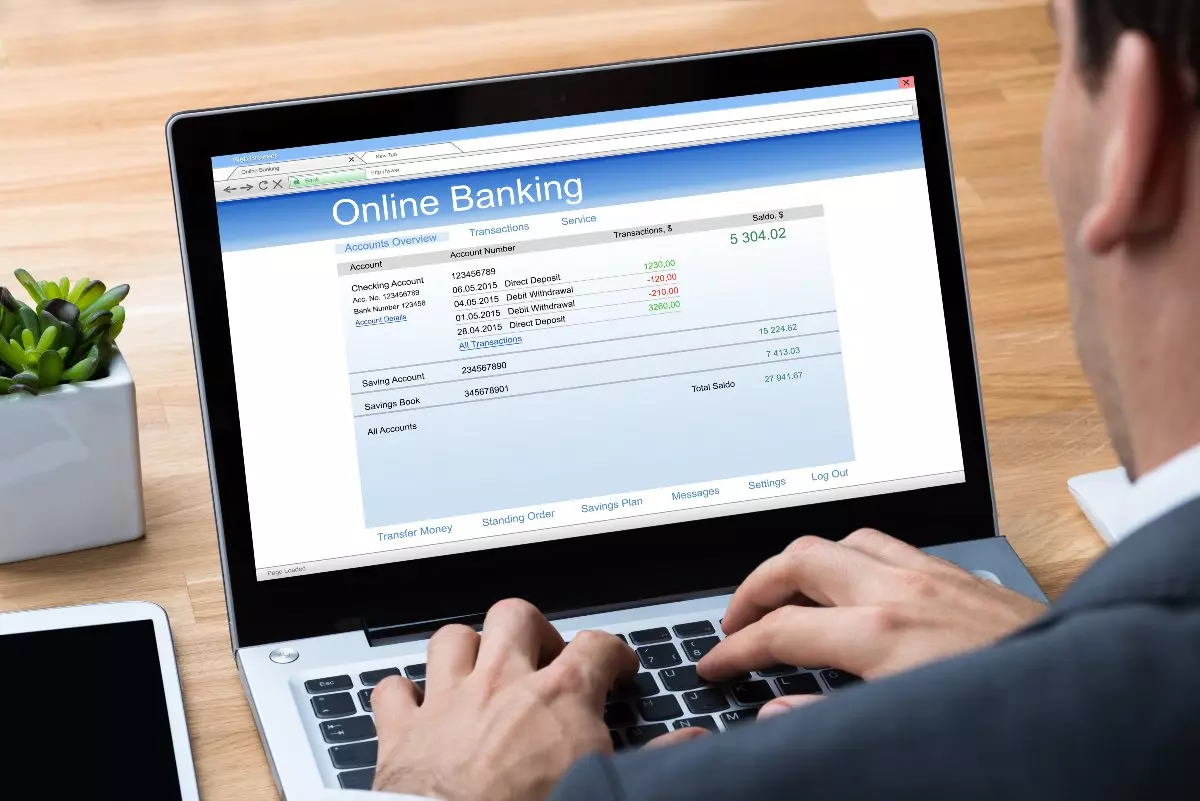Velocity Banking: What Is It and How Does It Work?
Velocity banking involves using a line of credit as the primary account to make lump sums towards a loan, typically a mortgage. In other words, you would use another line of credit as an expense account for mortgage payments. Individuals who utilize the velocity banking strategy believe it will allow them to pay off their mortgages faster and with lower interest.
What Is Velocity Banking?
Velocity banking is a method where you use a line of credit as the primary account and pay off a loan with lump sums. A line of credit may use your cash flow and extra money to cover your expenses and pay off your mortgage. Most often, this strategy utilizes a Home Equity Line of Credit (HELOC), and the HELOC functions as your primary expense account instead of a checking account.
What is HELOC?
A HELOC is a Home Equity Line of Credit that acts as your main expense account instead of a checking account. Individuals with a savings account may no longer need it since their income will go towards the mortgage through the HELOC.

Essentially, the goal of this method is to pay off a mortgage with less interest and at a faster rate. Those who generally utilize the velocity banking strategy will use a HELOC. With a HELOC, you borrow against the equity in your home, and the house is used as collateral for the line of credit. As you repay your remaining balance, you gain back your credit – just like you would with a credit card.
How Does Velocity Banking Work?
Here is a velocity banking step by step guide:
- Take out a mortgage
- Take out a HELOC
- Use your HELOC to pay down your mortgage
- Bring your HELOC balance to zero
How do you use a HELOC to pay off your mortgage? You open a HELOC with a credit limit and make lump-sum payments from the HELOC to your mortgage. Over the course of the month, you can put your living expenses on a credit card, and at the end of the month, you use your HELOC to pay off the credit card and your mortgage. Because a HELOC is revolving – meaning you can pay it back at any given time – the interest payments are determined using the daily average.
Velocity Banking Strategy
To better understand the velocity banking strategy, it helps to provide examples of how it is utilized. Using a velocity banking calculator can also help you figure out the right numbers and figures for your payments. Consider the example below:

Let’s say you have a house worth $250,000 and a $150,00 mortgage balance. You may also have other debts, such as car loans, credit cards, personal loans, and student loans.
Usually, you would make monthly payments toward the debts you have by using your checking account and writing checks. Your paycheck goes into your bank account, you pay off the debt, and some portion goes toward the loan balance, while the other portion pays the debt.
When you approach debt this way, you end up paying a high amount of interest as many debts are amortized in a way that benefits the bank. They end up receiving most of the interest up front. This protects the bank from having to deal with a default by the borrower.
The first payment made on this mortgage would send over 80% of the payment to interest and less than 20% to paying down the principal amount. After 18.5 years of payments, the monthly payment crosses over and most of the payment finally goes toward paying down the principal amount, with the remainder paying interest.
Back to the example let’s assume that the mortgage was $200,000. Your first mortgage payment would be around $952 per month with a 4% interest rate in a 30-year fixed mortgage. Using a velocity banking calculator, this means your first mortgage payment is around $790 in interest and $162 in principle balance repayment.
Common Assumptions of Velocity Banking
The velocity banking method sounds like a simple way to pay off your mortgage quickly. Many people think that velocity banking will help them pay off their mortgage sooner and with less interest.
However, there are a few assumptions regarding this banking strategy that could lead to further financial problems if you do not know how to properly utilize the velocity banking strategy.

Assumption #1: Paying Off Your Mortgage Early Is the Best Financial Decision
With velocity banking, there is the assumption that you need to pay off your mortgage as soon as possible, even if it means using all your available funds.
On the contrary, you may not want to pay off your mortgage immediately. Your home is your most important liability, and it is normal to have a mortgage.
In fact, it may be better to pay off your mortgage while using some of your extra cash to invest, grow your savings, or use it for other important purchases. For example, you may want to invest in stocks, life insurance, a mutual fund, or save up for retirement.
Assumption #2: Equity in Your House Counts as Savings, and a HELOC Will Increase It
Velocity banking can help increase your home equity. However, that is not savings, and you may not always be able to access it.
According to Life-Benefits, to truly count as savings, it must have “maximum liquidity and safety.” You need to be able to access the cash quickly and easily whenever you need it. So, while you may be able to increase your home equity, you are not really increasing the money you can access.
The velocity banking strategy may help those who want to pay off their mortgage quickly. But for those who want to save up their money for retirement, life insurance, or other purposes, velocity banking may not be the best option for them.
Cons and Pros of Velocity Banking
As with everything, it is best to weigh the pros and cons before making a decision. In the case of a financial decision, extreme precaution and prior research are a must.
Velocity banking is not for everyone, so be sure to familiarize yourself with the pros and cons before you proceed with this strategy.
Pros of Velocity Banking
- Velocity banking is a great way to pay down your mortgage if you know how to spend your money and allocate your finances properly.
- You can quickly decrease debt.
- Getting out of debt can allow you to invest your money in business ventures, life insurance, or other big-ticket items.
Cons of Velocity Banking
- Having an additional line of credit can lead to more debt.
- Having access to your equity could increase your spending.
- You may not be able to find a bank that has fixed-rate HELOCs. As a result, you may not know the amount of interest you will be charged over time.
- Velocity banking requires having constant cash flow. This is what you would use to pay off outstanding balances. If you do not have adequate cash flow, this velocity banking strategy may not be as effective in the long run.
- You can only focus your attention on the mortgage payoff. With velocity banking, you would be required to put all your money toward paying off your mortgage. That is great if it is your goal. However, you may reconsider if you are also looking to invest or save your money.
- Scams do exist. There are numerous companies and people who offer assistance when it comes to velocity banking. In some cases, they are scams. You should not have to pay for any of these services to utilize the velocity banking strategy.
Velocity Banking vs Extra Payments: Alternatives
If you decide velocity banking is not the right choice for you, there may be other options to choose from. Look at some of these alternatives of the velocity banking concept below:

- Biweekly payments. Instead of making payments every month, you can make payments every two weeks. This way, you will make 26 payments throughout the year, which is equal to 13 months’ worth of payments. With these extra payments, you may be able to shave off a few years from a 30-year mortgage. It may not be a significant change, but it is something.
- Refinancing. If you can, refinance your house to receive a lower interest rate or a shorter term.
- Making extra payments. If you can make multiple payments at any time toward your mortgage, it can decrease your principal significantly. Just adding in a few more dollars each month can help you slowly but surely pay down your debt.
- Paying on time. The last option would be to make timely payments and use your extra money for investment or savings.
Final Thoughts
Velocity banking may be a viable option for those who are looking to pay off their mortgage quickly. While the idea sounds appealing, there are some things to consider, such as increased spending and additional debt.
Be sure to do some research before choosing velocity banking. While you may want to pay off your loans immediately, it may not be the best decision if you are looking to invest or save your money for the future. If you are unsure, set up a meeting with your financial advisor and discuss the benefits of a velocity banking strategy.
Table of Contents
- What Is Velocity Banking?
- How Does Velocity Banking Work?
- Velocity Banking Strategy
- Common Assumptions of Velocity Banking
- Assumption #1: Paying Off Your Mortgage Early Is the Best Financial Decision
- Assumption #2: Equity in Your House Counts as Savings, and a HELOC Will Increase It
- Cons and Pros of Velocity Banking
- Pros of Velocity Banking
- Cons of Velocity Banking
- Velocity Banking vs Extra Payments: Alternatives
- Final Thoughts